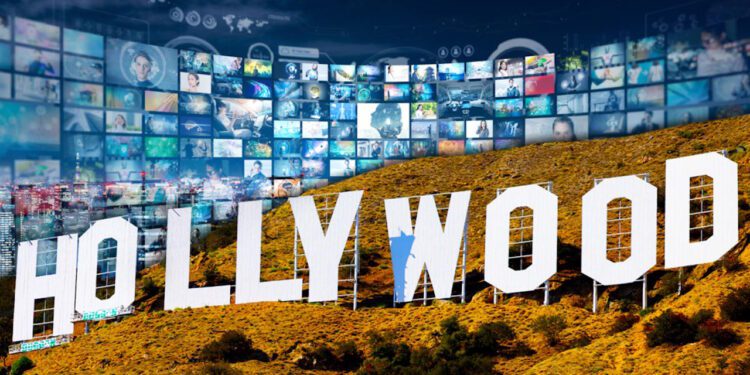Hollyweird feels the impact of downturn and discontent.
Tinseltown, it would appear, is losing some of its glitter as economic downturn, mismanagement, and industrial strikes all take a very heavy toll on the so-called ‘city of dreams’.
A recent study, released on December 7, shows an employment peak in Hollywood this April of 142,654 workers. But come October, that number showed 24,799 less employees, a 17% drop in total. Industry employees also are calculated to have lost around $1.4 billion in wages between April-September this year, which equates to 0.5% of the overall industry annual revenue.
As a result, and obviously as a direct consequence of the WGA and SAG-AFTRA stoppages, the Californian economy took a massive $6.5 billion loss during the industrial actions’ lifespan, in addition to both unions’ members losing 45,000 jobs collectively that will, in all likelihood, not be returning any time soon.
But even with the strikes now over (with SAG-AFTRA members voting by 78% to end their industrial action, effective as of December 5), it doesn’t necessarily mean that everything is peachy again in Hollyweird and all goes back to normal… or as normal as that town ever will be!
The very future of Hollywood’s current business model is in jeopardy, and indeed has been called into question even long before the picket lines formed this past spring. The aforementioned study, conducted by Otis College of Art and Design, states that “the strikes should be understood within the context of a broader restructuring of the Industry: employment was contracting in the industry even before the strikes. Employment in the industry peaked in May of 2016, and reached nearly the same level in August of 2022. Since this time, employment has shrunk by 26%”.
So how does Hollywood reverse the decline, both in employment and revenue?
1. Quality over Content
The industry has changed radically over the last decade, that much is patently obvious; no longer is the televisual axis divided along the television-cinema horizon line. The rise of streaming has completely upped the proverbial apple cart and the industry has either been late to adapt or overcompensated as a result thereof.
Studios ignored the rise of Netflix until it was too late, and now every studio has opened their own streaming service, pumping out as much content as can be produced to entice subscribers. The trouble is that more content means less quality as streaming providers become less discerning in the race to generate more content.
Less content is antithetical to streaming services, so perhaps studios making less content of higher quality in addition to combining resources in creating one or two main streaming channels or licensing content to existing services might prove a more viable model.
2. Drop the Culture Wars
Hollywood used to be all about the ‘four quadrant’ marketing strategy; projects that enticed in as many people and families as possible to watch the film or show in question. Mass appeal was the key which led to instant classics on small and big screen being produced, not to mention staggering amounts of money made by the studios.
But in the last decade, especially, it seems that many in Hollywood have decided to push their own political agendas rather than concentrate on tried-and-trusted values that connect with most ticket-buying members of the public. The sheer relentless proliferation of virtue signaling and the roar of PC agendas embedded in content has become deafening… and they’re paying a steep price for it as both ratings and box-office revenue has plummeted precipitously. Not coincidentally almost exactly in parallel to Hollywood’s increasing engagement in said culture war.
3. Fresh Ideas, Sane Budgets
As far back as 2012, both Steven Spielberg and George Lucas warned Hollywood that their business model of constantly rehashing older ideas and IPs at ever-increasing budgets was not sustainable and once massive mega-budget projects started flopping one after the other, only then will the business change.
Welcome to 2023 where that prediction has come true, with the year in cinema now referred to by some as the “year of the flop-buster” such was the number of mega-expensive, high-profile flame-outs at the box office. Disney alone has lost around $1 billion this year on failed movies, and with many high profile franchise installments like Indiana Jones, Mission: Impossible, and Fast and Furious all dramatically underperforming at the box office this year – and all three with budgets north of $350 million each – its almost impossible for such films to make a profit much less break even.
It’s not as if there is a drought of new ideas in Hollywood, it’s just that the studios aren’t interested in making them, instead choosing to regurgitate the same old IPs at ever expanding budgets, hoping that spectacle will win over substance. But clearly that well has run dry, audiences are increasingly bored of it, and if Hollywood wants to be a sustainable and viable commercial entity going forward, they need to diversify more evenly between small, medium, and big budget projects, develop and produce fresh ideas, and make projects at more realistic and manageable budgets, or else implosion awaits them.
And the clock is ticking…


